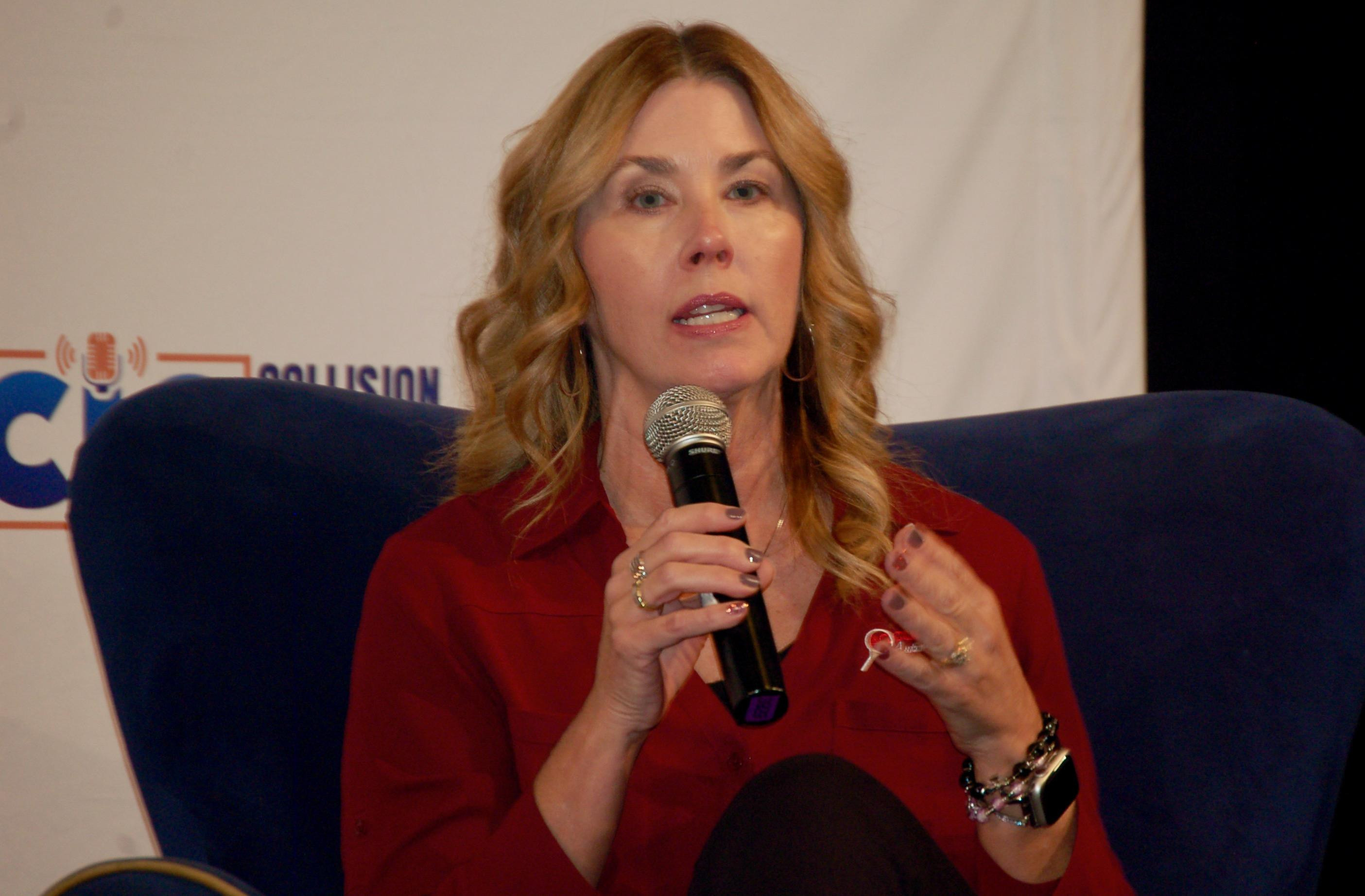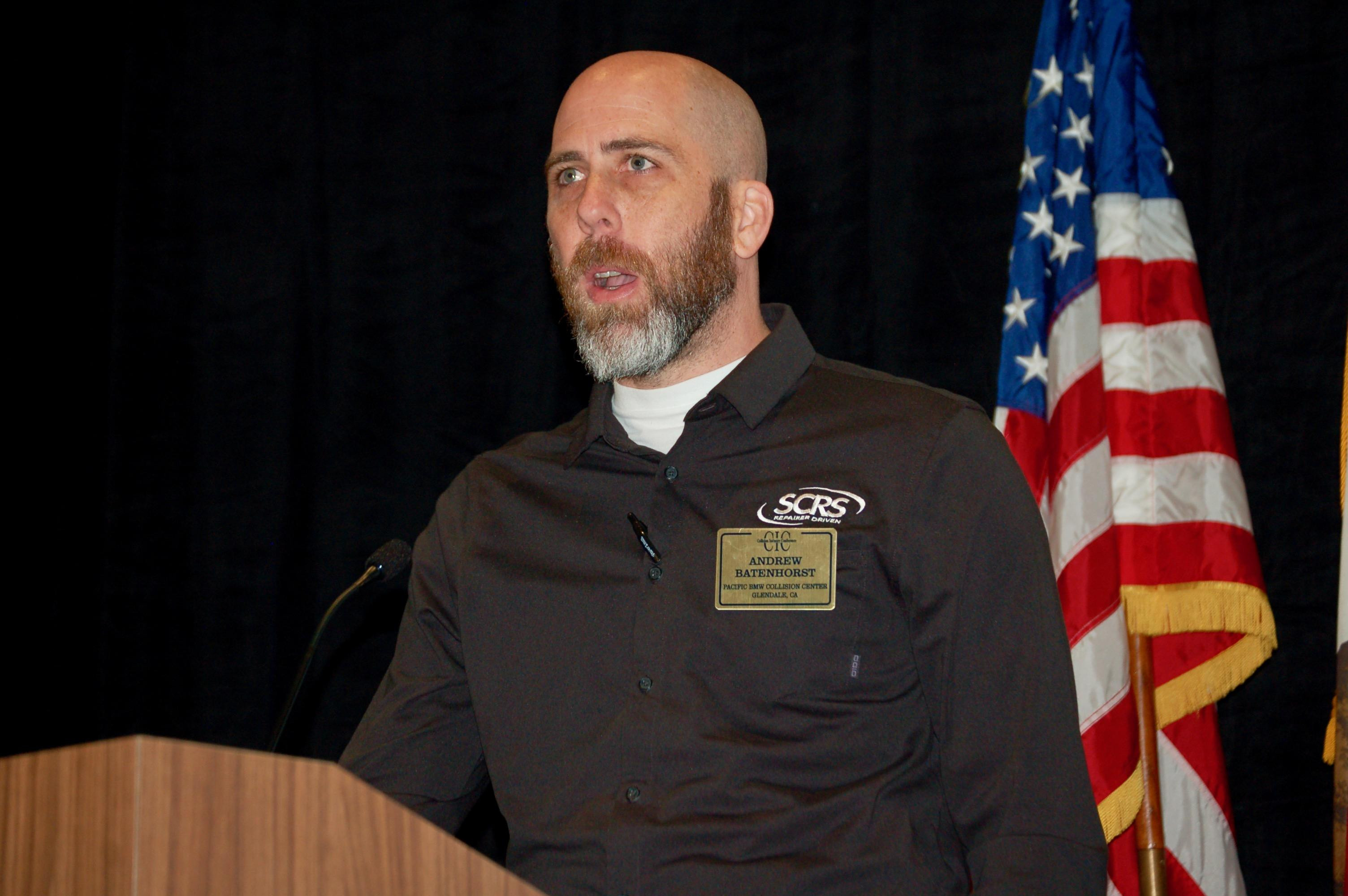One can’t-miss way collision shop owners can find some potentially great business ideas is to ask other shop owners about changes they’ve made recently. Understanding what prompted the changes, how they were implemented, and what the outcome has been can help inspire changes within your own shop.
Here’s a round-up of changes some collision business operators have made in past year or two.
Tiffany Silva of Accurate Auto Body in Richmond, CA, points to staffing changes she’s made at her 25-employee shop that are enabling her to better “work on my business, not in it.” She promoted an existing employee to assist the shop’s production manager, and added a third person to that team in a role she’s calling repair planner.
 Tiffany Silva of Accurate Auto Body in Richmond, CA.
Tiffany Silva of Accurate Auto Body in Richmond, CA.
“She’s helping with [locating] and emailing procedures to the techs and making sure everybody has everything they need to get right on that job, and helping with scheduling,” Silva said of the new hire, whose cousin is a longtime employee at Silva’s shop. “She just graduated [from college] and needed some direction, so we brought her in.”
Despite not knowing anything about the industry, the new employee is “into technology and she can figure out anything we need,” Silva said. “She’s doing all our pre- and post-repair scanning, and arranging the calibrations done by an outside company."
The employee promoted to assistant production manager had worked in both the paint and body departments at various times while at the shop, “so he’s respected by the entire team,” she said. “They are tag-teaming production. He’s done everything excepting estimating, so he’s learning CCC, and they know they can’t both be on vacation at the same time. So I always have a back-up person.
"I like to [quality control check] every vehicle before it leaves my shop, but that’s not always possible," Silva said. "So having a production team gives us someone based behind the computer, someone out on the shop floor directing traffic, and someone who can always QC vehicles for me. It’s been working out great.”
Dropping DRPs, Adding Co-Pays
Sue Black, who co-owns Dean’s Auto Body in Sheboygan, WI, with her son, said she has eliminated some direct repair programs and negotiated new labor rates with some insurers.
“We have been able to work on that and really pay our technicians what they deserve to be paid so that we can retain them and also train them and keep them qualified to repair the vehicles coming to us,” Black said.
She said the shop also has started to sometimes charge customer co-pays.
“We’ve just explained to them: This is what your insurance company is willing to pay for the repair of your vehicle, but here is the research that says that this, this and this needs to be done on your vehicle, and we want to make sure that your vehicle is getting back on the road properly, and in order to do that, you might have to pay some out-of-pocket expense,” Black said. “And because we sit down and really explain the situation to our customers, a lot of them are willing to pay extra to have their vehicle repaired the correct way.”
She said the most common co-pay is to cover the use of OEM parts.
“Consumers really don’t know when they’re buying an insurance policy, what that policy really all entails,” Black said. “I always explain to my customers that the insurance companies are qualified to sell insurance, but we’re qualified to repair your vehicle. I wish we could work together with the insurance companies to really create a safe policy for our consumers to have their vehicles repaired the proper way.”
Personnel Changes, Adding Transparency
Tom Ricci, owner of Body & Paint Center in Hudson, MA, said he’s been pursuing more non-insurance commercial work.
“Because we’ve got a couple accounts now that we’ve groomed in the last couple of years to pay a sizably higher labor rate,” Ricci said.
Like Silva, he’s also made some management personnel changes that have been “very fruitful for morale and production.” He came to realize his production manager “wanted to play fireman, but we didn’t want fires,” so he promoted another person to that position. One of the shop’s three estimators now oversees that team and works with the production manager.
“So that removed me a lot more from the day-to-day,” Ricci said. “But it also increased production because of the right attitude of the right two people, as co-managers.”
Will Latuff, president of Latuff Brothers Auto Body in St. Paul, MN, said his company is another one that has “parted ways with several DRPs.”
“We basically made some decisions on what is our fight and what’s not our fight,” Latuff said. “And I think it’s actually helped us support the consumer more. Because keeping them more involved and more updated, and peeling things back so they can see the transactions and what goes on when a supplement is submitted, really lets them know how hard you’re working for them, to get them taken care of.”
 Andrew Batenhorst of Pacific BMW Collision Center in Glendale, CA.
Andrew Batenhorst of Pacific BMW Collision Center in Glendale, CA.
The transparency helps keep customers up to date, he said.
“We give them copies of what was submitted [to the insurer], letting them know the deficiencies when it comes back, letting them know what their potential out-of-pocket could be,” Latuff said. “They see we submit a repair plan that’s vastly different than the photo estimate the insurance company created, and it comes back with an initial difference, which is usually pretty large, but by the time we get down to the final bill and the gap is reduced substantially, you’re the hero. They’re happy for everything that you did throughout the repair.”
Better Triaging of Jobs
As the manager of Pacific BMW Collision Center in Glendale, CA, Andrew Batenhorst said parts delays can be significant for BMW parts out of Germany.
“Anything that’s coming from that side of the world is four to six weeks away in some cases,” Batenhorst said. “So what’s been really helpful for us is being very aggressive with how we triage or job sort, deciding what cars are going to come into the shop, and which ones we will keep on the road as long as possible. So on certain job sizes, we can do a quick inspection on them, maybe loosen up the bumper or use an inspection camera to check out possible hidden damage, and we can get a repair plan that’s maybe 85% to 95% of the way through. We can get the parts pre-ordered and arrived, and we can cut the repair time down immensely because we’ve maybe also gone through a supplement approval at that point, too.”
He said one hurdle with this is the amount of space involved in storing more pre-ordered parts than they have in the past.
“So we’ve adapted our logistics to be able to handle it, and it’s worked really well,” he said. “We’ve had a lot of positive feedback from clients. If the car’s just cosmetically damaged, then they’re typically okay with us doing that for them. Now, if it’s not drivable, we’ll have to go ahead and get the car in. But for probably 40% to 50% of our work, we can minimize the downtime here, and it does pay off in the long run.”











John Yoswick